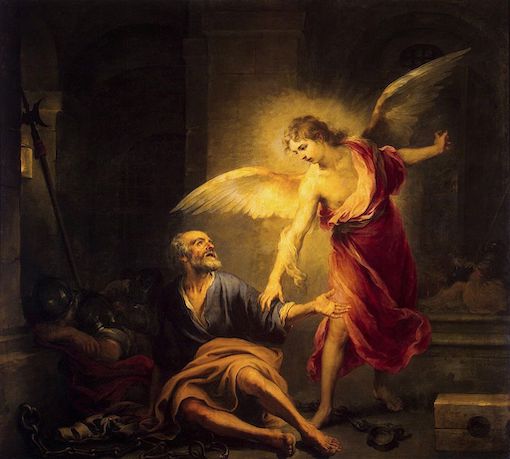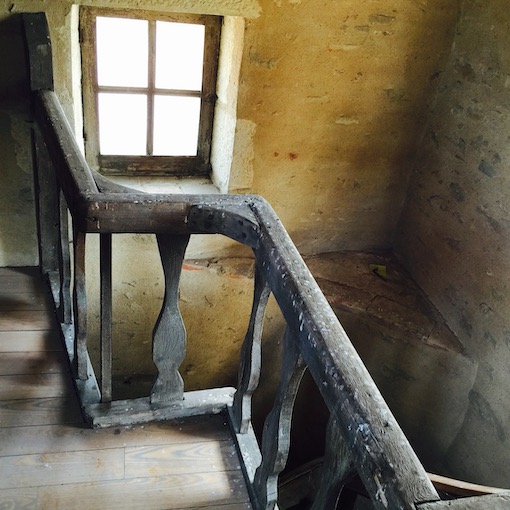What, in fact, is Real?
Mr. Gurdjieff assures us that in the conditions of ordinary life, we encounter our true selves only very rarely. It often occurs when presented with surprising or unusual circumstances. It is in these moments of presence, or self-remembering, that we connect with actual reality, that we are truly ourselves. Indeed, these may be the only moments in which we are real, in the sense that it is then that our immortal soul appears.
O book, O chants! must all then amount to but this?
Must we barely arrive at this beginning of us?—and yet it is enough, O soul;
O soul, we have positively appear’d—that is enough.
– Walt Whitman
Four States of Consciousness
The Fourth Way describes four states of consciousness possible for man.[1]
The first is when we are asleep in bed, subject to dreams. The second is the state in which our entire life occurs: working, driving, dining, conversing, etc. Fourth Way authors alert us to this state being not much different than the first. The second state is characterized by day-dreams, or imagination.[2]
The third state is entirely different. It is characterized by knowing the truth about oneself. The fourth state of consciousness is that of knowing the truth about the surrounding world.
From the Lower to the Higher
For practical purposes, in this essay we will address the progression from the second to the third states of consciousness.[3] This transition—between our ordinary mental state and that of knowing the truth about ourselves—is often not binary, or discrete. Rather, it usually proceeds in minute gradation. The true and the false parts in us, essence and personality,[4] the lower self, are always with us. In this sense, we can always make the effort to be in our higher part.[5]
Real Work and the Steward
The part in us that can grow, and become real, is essence. More specifically, it is the intellectual part of the emotional center, the king of hearts.[6]
To find a school, one must have an accumulation of higher influences, or a magnetic center, located in the king of hearts. Once in a school, the part that can work to reach presence, or higher states of consciousness, is again located in the king of hearts. When fully developed, this part is called the Steward. It is the activity of the Steward that heralds the arrival of the Master, of one’s Higher Self, or soul.

Murillo, Liberation of St. Peter from prison
Escaping from Prison with the Help of Others
As Mr. Gurdjieff tells us, to escape from prison, in our case that of the second state, several prisoners must get together. There are reasons for the need for durable friendships in order to do school work. One reason is that alone it is much easier to lapse into imagination. Another is that the human machine sees weaknesses more easily in others than in itself.[7]
This allows for the possibility of gently and lovingly pointing out to a friend a ‘photograph’ or a description of a mechanical manifestation, the lower self. However, a photograph can also be used to point out strengths in each other.
Another reason for working together is the amassing of higher energies. One aspect of consciousness, or of presence, is that when it is shared, rather than diminishing, it grows.
Thousands of candles can be lighted from a single candle, and the life of the single candle will not be shortened. Happiness never decreases by being shared.
– Buddha
Real Work Requires a Real Teacher
Ultimately, real work in a school necessitates the presence of a real teacher.[8]
It is the teacher’s connection with higher forces—‘C influence’ in the words of Fourth Way authors—that makes growth of higher centers possible.
One aspect of this condition is the necessity of school discipline through tasks and exercises. The primary task for a student in a Fourth Way school appears to be the non-expression of negative emotions. This is a necessary step on the way to transforming suffering into presence, on one’s way to becoming real. Thus, cultivating and sustaining a positive attitude towards one’s teacher is a big secret in a real school.
[1]In this essay ‘man’ denotes ‘woman’ also.
[2]In the Fourth Way ‘imagination’ denotes the passive flow of associations that comprise the near-entirety of our mental lives; not active, creative imagination.
[3]One reason for this is that in the second state we have a limited command of our thoughts. Under specific school training and exercises, thoughts may lead one from the 2ndto the 3rdstates of consciousness.
[4]For more detail, the reader is referred to the article ‘Multiplicity and Unity: Personality and Essence’ in the ‘Multiplicity and Unity’ issue of https://www.fourthwaytoday.org
[5]As Mr. Ouspensky stated (paraphrasing): ‘There is no situation in which one cannot remember oneself.’
[6]See ‘Balancing the Lower Centers to Reach Higher Centers’ in the ‘Lower Centers and Higher Centers’ issue of of https://www.fourthwaytoday.org
[7]Mr Gurdjieff’s observation.
[8]Robert Earl Burton, in the case of The Fellowship of Friends.
